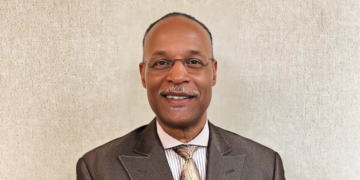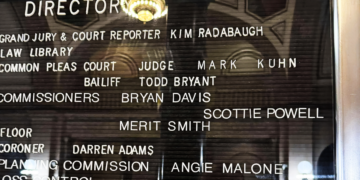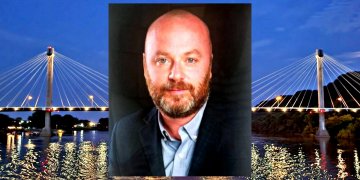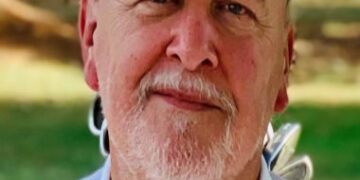Fire Chief: Portsmouth First Responders Pushed To Breaking Point
Portsmouth Ohio Fire Chief William Raison told Portsmouth City Council his people have been pushed to the breaking point. “We really are in a bad way. Our call volume has increased exponentially.” Chief Raison said between fire and EMS calls, it’s not uncommon to respond to two, and sometimes even three or four, calls at the same time. Now, he wants to hire three additional people.
A quick look at the Portsmouth Police Chief’s Daily Briefings often shows first responders called to the scene of multiple COVID emergencies, overdoses, fires, car accidents, and other events, often with a very short period of time. The majority of that increase in volume is related to the department’s decision to respond to EMS calls. “We went from 700 to 800 calls a year to we’ll push 4,000 this year.”
While the city charter specifies 44 firefighters, the chief said the department has never been fully staffed in the past 40 years. “There are 38 uniformed firefighters.”
Our Luck is Running Out
The chief said it’s taking a toll on his crew. “One of our biggest concerns is the stress on the members of the department.” Raison said often there is no downtime at all between high-stress calls. First responders clear one call and must immediately respond to another.
“We are forcing people to work overtime so we can keep equipment in service,” he said. “I don’t know how much longer we can do that because it’s putting a serious strain on people. If you work your shift and respond to 20 to 25 calls and then you get mandated to stay over and work another shift with 20 to 25 calls, it’s just exhausting.”
Several members of the fire department were in attendance at the meeting. Two spoke out on the issues, calling on the council to help. “We’re trying to do the best we can with the amount of call volume. Our luck is running out.”
The chief said one of his first responders quit in August. “One of the comments he made was, ‘I’m tired of running to death.’ We’re in the process of replacing him.” But he says he needs more personnel.
Long Wait for New Firefighters
Raison said that even if he began hiring new personnel right now it would be a lengthy process to get new personnel trained. While there’s an existing list of candidates who have taken the required Civil Service test, none of them have any fire training. “The time from when we hire them to where we can get them to actually be useful is probably 9 months. Right now with the academy schedules, there’s not another class until February.”
Raison said another Civil Service test will be offered at the end of October in the hopes of more people with existing training taking it.
Mayor Kevin Johnson asked the Chief how the city could juggle the financing of adding more personnel with their goal of getting off fiscal watch.
Where The Money Comes From
“You won’t like my answer to that question, I suspect,” Chief Raison replied. “I’ve watched the General Fund increase steadily over the past 5 years. We ended 2020 with almost $10 million in reserve in the General Fund. We had over $1 million in CARES Act money given to the city to offset the cost of the COVID crisis, which we deal with on a daily basis. In my opinion, there’s funding there.”
Members of the city government asked Raison why EMS charges haven’t increased in the past 3 years and expressed disappointment that revenue hadn’t increased with call volume “If we’re in the EMS business, shouldn’t our profits be reflected at some point?”
“We’re in the emergency response business,” the chief responded. “The reason it’s a function of government is that it’s not a for-profit business. We’re never going to pay for EMS services with just the billing.”
Raison said there were over 200 ambulance transports in August that would bring in about $40,000 in revenue and that September would likely be similar. “By the end of the year, we could generate well over $350,000 in gross revenues.” Just over 7% of those fees are paid to the billing companies.
The Fire Department spent $47,000 on overtime in August alone. “Two months of that would pay for an additional firefighter.” He said it might top $300,000 for the year.
The decrease in overtime, fees from additional EMS calls they are able to answer, and money from the city’s General Fund would cover the expense of hiring new personnel.
Fiscal Watch
City Manager Sam Sutherland expressed concern that while the positive balance on the city’s General Fund makes it look as if Portsmouth is flush with cash, there are other things to consider, “Right now we are set up where we are deficit spending a little bit. The state has informed me we have to tweak that or they are not going to let us out. (of fiscal emergency status) Right now, even with the balance we got, we’ll start hitting borderline about 2027.” He acknowledged that the Fire Department is busy, “I hear you running calls all night long.”
The chief said he personally frequently responds to medical calls due to short staffing. It’s increasingly difficult to pass calls off to private ambulance companies because the chief says, “They are dealing with their own issues. We can’t rely on private for-profit ambulance companies with no obligation to the City of Portsmouth. They have their own staffing issues.”
He said many people think most of their calls are related to overdoses, but that’s not the case. “It’s probably less than 10%.”
Council members discussed various options like public education to reduce misuse of EMS services, the possibility of additional private ambulances coming to town but no real alternatives to alleviate the situation were settled on.
Sutherland said the state auditor monitoring the Portsmouth budget said the fire plan could work but may need some changes. He hopes to meet with the auditor by mid-October. Sutherland said he thought he could have a response from the state by the next council meeting.
Council Vice President Sean Dunne said he would like to wait for input from the state before making the decision. The rest of the council agreed.
“Your financial numbers are what you look at to make a decision,” the chief said. “My workload is what I look at, the risk to the community. Somewhere those have to meet.”




















































































